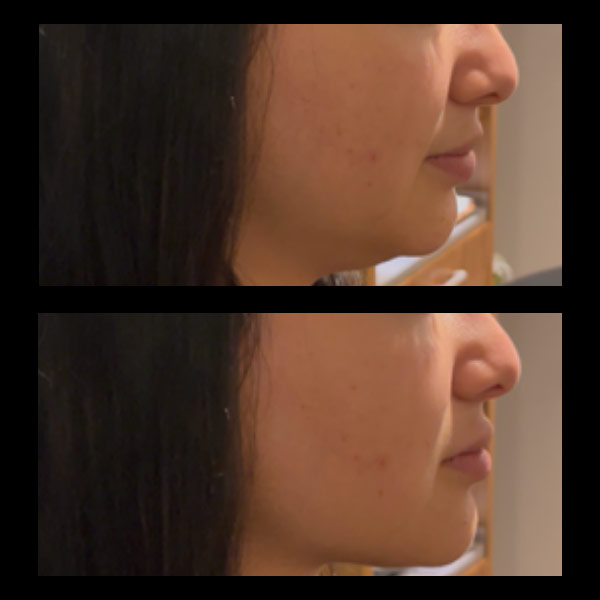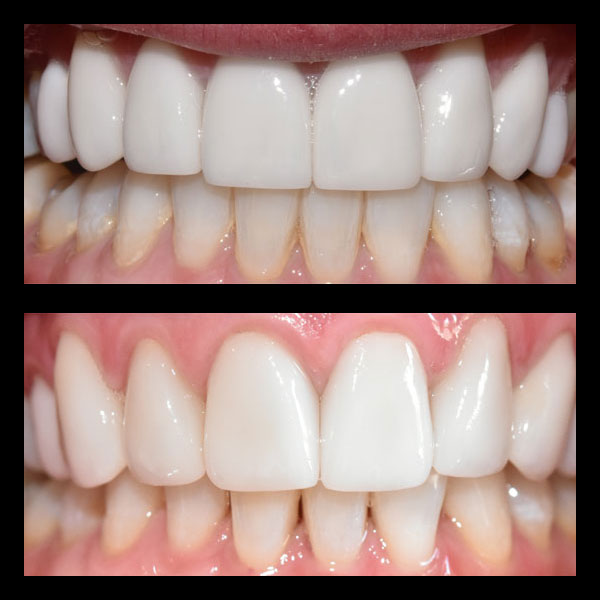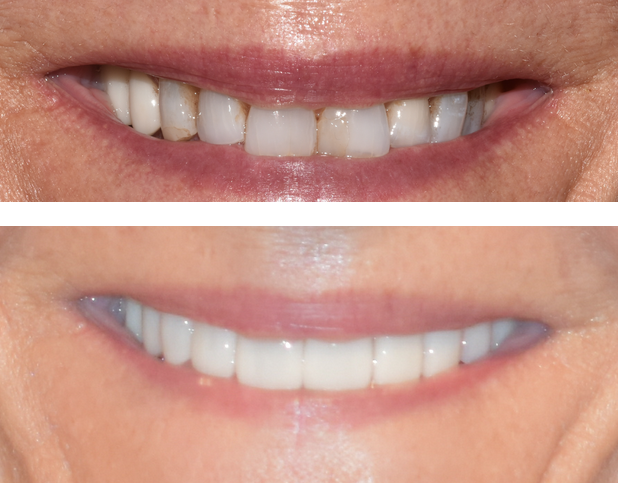Hey everyone! Can you believe it’s already mid-April 2025? Time flies when you’re… well, thinking about teeth, I guess! As someone who’s been writing about health and wellness for over a decade, I’ve seen some incredible shifts, especially in dentistry. Remember when fixing a tooth mostly meant a clunky metal filling or a crown that just *looked* like a crown? Things have seriously changed. Restorative dentistry today isn’t just about patching things up; it’s this amazing blend of high-tech tools, artistic skill, and a deep understanding of how your whole mouth system works together. It’s about getting your smile back to not only *looking* great but *feeling* and *functioning* perfectly too.
It’s less about just fixing a problem and more about crafting a solution that lasts and truly enhances your life. Pretty cool, right?
Innovative Techniques in Restorative Dentistry
So, what’s driving this evolution? Technology, for starters. Gone are the days of messy impressions and guesswork. Modern dental practices, especially those focused on cutting-edge care like Incredible Smiles here in Boulder, are embracing tools that sound like they’re straight out of a sci-fi movie, but trust me, they make a world of difference.
Take 3D cone beam imaging (CBCT), for example. This gives dentists a super-detailed, three-dimensional view of your teeth, jawbone, nerves – everything. Planning for something like an implant? CBCT allows for incredible precision, ensuring the implant is placed perfectly for stability and longevity. It takes so much of the guesswork out of complex procedures.
Then there are lasers. Dental lasers aren’t just one thing; they can be used for a bunch of different tasks, from treating gum disease more comfortably to preparing teeth for fillings, sometimes even without anesthesia! They are incredibly precise and often lead to faster healing. And let’s not forget digital scanning. Instead of biting down on that gooey stuff for impressions (ugh, the worst!), dentists can use a small wand to quickly capture a precise digital map of your mouth. This is huge for creating perfectly fitting crowns, veneers, bridges, and even clear aligners like Invisalign. The accuracy is just phenomenal.
This level of detail feeds directly into what we call “precision dentistry.” It means treatments are meticulously planned and executed for optimal results – smiles that are not only beautiful but also work harmoniously with your bite and jaw. But it goes beyond just tech. Truly innovative practices adopt a holistic and neuromuscular approach. This means looking at the bigger picture: how your teeth, muscles, and jaw joints interact. Problems in one area can affect the others, leading to things like TMJ pain, headaches, or even worn-down teeth. Addressing these underlying issues is key to ensuring restorative work lasts and contributes to your overall wellness, not just a quick fix.
The Art and Science of Dental Restoration
Okay, let’s be honest. When we talk about restoring a smile, we want it to *look* good. Really good. This is where the artistry comes in, and it’s just as important as the science. Creating a restoration – whether it’s a single crown or a full set of veneers – that looks completely natural requires a keen eye for detail, color, shape, and how light reflects off the teeth. It’s about mimicking nature perfectly.
Think about procedures like veneers or Lumineers. These are thin shells of porcelain bonded to the front of your teeth. Done well, they can correct discoloration, chips, slight misalignments, and gaps, creating a stunning transformation. But the magic is in the customization – crafting each veneer to complement your facial features and look indistinguishable from natural teeth. Similarly, dental bonding uses tooth-colored resin to repair chips or reshape teeth. It requires a skillful hand to sculpt the material for a seamless blend.
Precision is paramount when placing crowns, bridges, and dental implants. A crown needs to fit perfectly over the prepared tooth to protect it and feel comfortable. A bridge needs to fill a gap seamlessly, supported by adjacent teeth or implants. And implants? They form the foundation for replacement teeth, needing precise positioning within the jawbone (thanks again, 3D imaging!) for stability and a natural emergence profile. It’s a delicate balance of ensuring perfect function – how you bite and chew – with aesthetics that make you want to smile constantly.
Here at Incredible Smiles, the team, including the highly skilled Dr. Priya Uppal and Dr. Lori Kemmet, really embodies this fusion. With decades of combined experience, they bring not just technical expertise but that crucial artistic touch and neuromuscular understanding to every restoration. It’s not just about fixing teeth; it’s about designing smiles that are both functional and beautiful, tailored to each individual.
Exploring Customized Restorative Solutions
One size definitely does not fit all in modern dentistry. What works for your friend might not be the right solution for you. That’s why a cornerstone of innovative restorative care is the individualized treatment plan. It all starts with a thorough assessment of your unique situation – not just looking at the obvious problem tooth, but understanding your bite, your jaw health, your aesthetic goals, and even your lifestyle.
This is where advanced diagnostics, like those digital scans we talked about, play a huge role. They provide the detailed information needed to map out the best course of action. Maybe you just need a simple composite (non-metal) filling – these days, they blend beautifully with your natural tooth color. Or perhaps you need a crown to protect a weakened tooth, or a bridge to replace a missing one. For more complex situations involving multiple teeth, a full mouth reconstruction might be necessary. This sounds intense, but it’s a comprehensive approach to rebuild your smile’s function and appearance, often combining several restorative techniques.
Interestingly, sometimes the path to a perfectly restored smile involves treatments you might not immediately associate with restoration. For instance, subtle alignment issues might be best addressed with clear aligner therapy (like Invisalign) before placing veneers or crowns, ensuring a more harmonious and stable final result. Even treatments like Botox can play a role – not just for smoothing wrinkles, but therapeutically, it can help relax overworked jaw muscles that contribute to clenching, grinding, and TMJ pain, protecting your natural teeth and dental work. It’s all about using the right combination of tools and techniques tailored specifically for *you*.
Total Patient Wellness and Long-lasting Outcomes
Ultimately, the goal of great restorative dentistry extends beyond just fixing teeth. It’s about enhancing your overall quality of life and ensuring your dental health is stable for the long haul. This means adopting a patient-centered approach that prioritizes comfort, function, and lasting wellness.
Think about it: restoring teeth beautifully doesn’t mean much if underlying issues aren’t addressed. That’s why integrating treatments for conditions like TMJ dysfunction is so crucial. Using neuromuscular principles to achieve an optimal bite and reduce strain on the jaw joints ensures your restorations aren’t subjected to undue stress. Similarly, effective bite optimization techniques can alleviate discomfort and prevent future wear and tear. Even addressing sleep apnea with custom oral appliances contributes to overall health and can protect your teeth from the effects of grinding often associated with sleep-disordered breathing. Incredible Smiles incorporates these therapies right alongside their restorative work, viewing your oral health as part of your total systemic health.
So, what does the journey look like? It typically starts with a comprehensive consultation – a real conversation about your concerns and goals. Then comes the diagnostic phase, using tools like digital scanning and imaging to get the full picture. From there, a personalized treatment plan is created. Throughout the process, communication is key, ensuring you understand each step. And care doesn’t end when the treatment is complete; ongoing support, regular check-ups, and cleanings are vital for maintaining your restored smile and overall oral health.
Practices like Incredible Smiles in Boulder are committed to this holistic vision, providing not just state-of-the-art treatments but also a supportive, spa-like environment where patient well-being is the top priority. It’s about building relationships and ensuring you feel confident and cared for every step of the way.
Modern restorative dentistry is truly transformative. By blending cutting-edge technology with artistic precision and a focus on the whole patient, dentists can now craft smiles that are not only stunningly beautiful but also healthy, functional, and built to last. It’s an exciting time to explore what’s possible for your own smile!
Feeling inspired or curious about how these innovations could help you? Why not take the next step? Reach out to the team at Incredible Smiles for a consultation. They can explore your specific needs and show you how personalized, precision dentistry can make a real difference. Let me know in the comments – what dental innovation are you most excited about?
Frequently Asked Questions
What is restorative dentistry?
Restorative dentistry focuses on repairing and enhancing the function and aesthetics of teeth. It combines high-tech tools and artistic skill to restore your smile to look, feel, and function perfectly.
How has technology improved restorative dentistry?
Technology has revolutionized restorative dentistry with tools like 3D cone beam imaging (CBCT) for detailed views of the mouth, lasers for precise and comfortable treatments, and digital scanning for accurate impressions.
What role do lasers play in modern dentistry?
Lasers can be used for multiple dental procedures, including treating gum disease and preparing teeth for fillings, often with greater precision and comfort, and sometimes without anesthesia.
Why is precision important in dental restorations?
Precision ensures that dental restorations like crowns, bridges, and implants fit perfectly and function harmoniously with your bite and jaw, leading to lasting and comfortable outcomes.
How does a holistic approach benefit restorative dental care?
A holistic approach considers the interaction of teeth, muscles, and jaw joints, addressing issues like TMJ pain to ensure lasting results and improved overall wellness.
What are the benefits of digital scanning in dentistry?
Digital scanning replaces traditional gooey impressions and allows for a precise digital map of your mouth, aiding in the creation of perfectly fitting crowns, veneers, and aligners.
What makes individualized treatment important in restorative dentistry?
Individualized treatment plans cater to unique dental situations by thoroughly assessing bite, jaw health, and aesthetic goals, ensuring the most effective and personalized care.








